Science Based Targets initiative
As part of a group-wide initiative, Fagerhult aligned its climate targets with the Paris Agreement’s 1.5°C goal in 2022, under the Science Based Targets initiative (SBTi). The ambition is to achieve net-zero emissions across the entire value chain by 2045 at latest.
Our target is a minimum 90% reduction in total emissions compared to 2021 levels, with any remaining emissions neutralized through carbon removals. We have since implementing these targets, successfully reduced its emissions year after year. For the Fagerhult brand, this commitment encompasses emissions from two production sites and elven sales units.
*All reported figures on this page are as of December 31, 2024.
Our targets
-70%
Scope 1&2, 2030
-30%
Scope 3, 2030
Netzero
2045
Greenhouse Gas Protocol
To understand and measure the climate impact of an organization, the GHG Protocol (Greenhouse Gas Protocol) is used – a globally recognised standard for calculating and reporting greenhouse gas emissions. The protocol categorizes emissions into Scope 1 (direct emissions), Scope 2 (indirect emissions from energy) and Scope 3 (other indirect emissions). Scope 3 covers the entire value chain and is often the largest source of emissions, it includes both upstream activities and downstream activities.

Scope 1, Facilities
We have significantly reduced its direct emissions by replacing fossil-based heating in its Swedish production unit with 100% renewable energy. Since 2021, we have reduced Scope 1 emissions by 46%.
Scope 1, Vehicles:
Current Scope 1 emissions mainly come from company cars. We are actively working to phase out fossil alternatives, and today 78% of the vehicle fleet consists of electric cars and plug-in hybrids.
Scope 2, Electricity
100% of the electricity used in our two production units originates from certified renewable sources (GoO). In 2020, we also invested in solar panels at our headquarters in Sweden.
Scope 2, District heating
In 2009, we replaced fossil oil with renewable district heating to warm our Swedish production facility. The energy comes from wood chips, which have a very low carbon footprint. At our site, we process wood from single-use pallets from incoming goods and use it as a heat source. This allows us to reduce both waste and resource consumption.
Scope 3, Materials
10% of our total GHG-emissions originate from the materials we use in our products. To reduce this impact, we purchase recycled aluminium profiles and manufacture luminaires using renewable materials such as wood, solid board, and ISCC-certified plastic. Since 2021, we have reduced the material-related emissions by ca. 2700 tonnes CO2e (-9%).
Scope 3, Production waste
We prioritise recycling in our production, sorting waste into over 30 fractions to ensure maximum material recovery. In 2024, less than 0.5% of our waste went to landfill, while 88% was recycled and repurposed. The remaining waste was converted into energy, contributing to the heating of homes and buildings.
Scope 3, Usage phase
The usage phase accounts for approximately 87% of our total greenhouse gas emissions, primarily due to electricity consumption over the long lifespan of our products. With energy-efficient luminaires and smart lighting, we can minimise our impact. Around 10% of our sales include integrated sensors. Since 2021, we have reduced emissions from the usage phase by 144 600 tonnes of CO2e (-38%), equivalent to approximately one-fourth of Greenland’s total annual emissions.
Scope 3, End-of-life
Our products are designed for easy recycling, with materials that can be separated without glue, tape, or composites. Repair, replacement, and upgrades are facilitated through circular design principles. With our ReLight concept, we further reduce waste by reusing existing lighting instead of replacing it. In 2024, we reused an average of 25 products per workday
Annual reporting according to SBTi's guidelines
Our targets are based on the Greenhouse Gas Protocol's market-based approach and are reviewed annually by an independent party. For Scope 1 and 2, activity data, such as energy bills, is used along with recognized emission factors. Scope 3 is calculated through a combination of activity data and scenario data. This means we make assumptions to estimate emissions from the usage phase of our products, as these may occur decades from now. As more information and new insights become available, these assumptions may be adjusted.
Out baseline
All our climate goals are based on our baseline year 2021, a reference point for measuring emission reductions over time. Fagerhult was a pioneer within the group, completing a full Scope 3 calculation as early as 2020. However, 2021 serve as the baseline since our sister companies conducted their first full calculations then. This ensures a consistent and comparable starting point for the entire Fagerhult Group.
One of our core values
While our climate targets and action plans within SBTi are based on 2021, environmental responsibility has long been a core part of our organisation. Already in 1998, we took a step that few others dared – we presented a voluntary, third-party reviewed environmental report as a complement to our annual report. Since then, we have systematically collected data to calculate our emissions – a essential part of our efforts to make informed decisions and actively reduce our climate impact.
Our progress in Scope 1&2
Since 2021, we have reduced our impact at a rate that exceeds our targets. Overall, emissions in these scopes have decreased by 41% since our baseline year. One of the main reasons is that we are electrifying our vehicle fleet and investing in renewable energy sources in production.
Our progress in Scope 3
We have reduced our Scope 3 emissions every year since our baseline year, and overall, we have reduced emissions in this scope by 36%. Behind this reduction are investments in energy-efficient luminaires and smart lighting, while replacing fossil plastics and virgin materials with recycled and renewable alternatives.

Progress in total

In the graphs, the green bars represent a linear reduction in emissions from our baseline year 2021 to 2030, which is the reduction rate required for us to meet our targets during the period. The white bars show the actual outcome for each year.
But how much is one ton of CO₂e?
The amount of CO₂ absorbed by 40 trees in one year.
Source: EcoTree
The annual electricity consumption of 8 Swedish apartments.
Source: Bixia
The emissions from producing 36 kg of beef.
Source: World Wide Fund for Nature (WWF)
Significant initiatives for our results
Click on the icons to read more.

Close
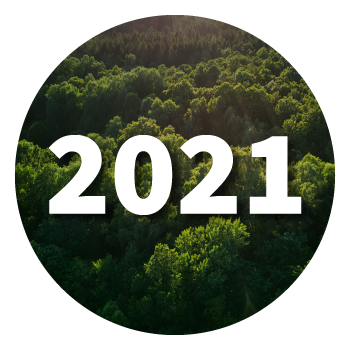
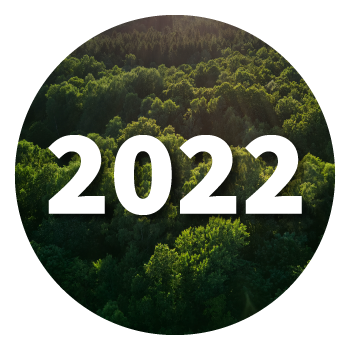
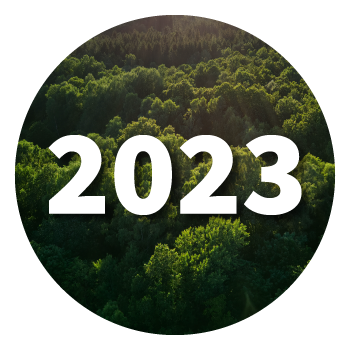
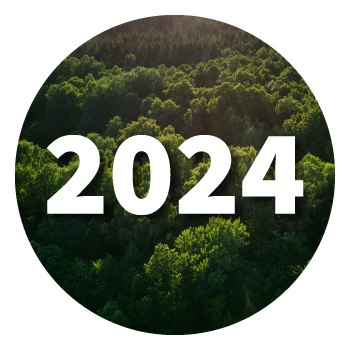

2021
From sheet metal to renewable solid board
Multilume Re:Think was launched as a groundbreaking product for the industry with a body made of the cardboard material Solid Board. Since its launch, the product has reduced our Scope 3 emissions by over 200 tons of CO2e. The reduction is equivalent to planting and allowing 800 trees to grow for 10 years.
Packaging in renewable material
We decided that all newly developed products will only use packaging made from renewable or recycled materials to reduce Scope 3 emissions. At the same time, we started changing the packaging for our existing range, starting with our high-volume products.
Fossil-free operation with solar panels
We took another step towards fossil-free operations by having our solar panels deliver renewable energy to our operations, equivalent to the annual electricity consumption of 35 medium-sized apartments.

2022
Aluminum produced with renewable energy
We started to use aluminium profiles with certified origin, ensuring that all energy used in production comes from renewable sources. This reduced our emissions by 609 tonnes CO₂e in 2022, equivalent to 2% of our remaining material emissions.
From fossil fuel-free plastics to renewable plastics
Discovery was relaunched with ISCC-certified plastic from renewable sources, reducing the product’s carbon footprint by 19% compared to its predecessor Discovery Evo. In total, this resulted in a 240-ton CO₂e reduction within Scope 3 in 2022.
Reuse of luminaires
ReLight was introduced as our concept where we upgrade existing lighting solutions and maximise material reuse. So far, over 15,000 products have been repurposed, significantly lowering our material-related emissions.
Electricity from renewable sources
Our factory in Suzhou, China, transitioned to 100% certified renewable electricity.

2023
A product in wood where every detail is questioned
Kvisten was launched – a pendant luminaire made from 77% renewable and recycled materials. The body is crafted from wood, and the reflectors are repurposed components from discarded TVs. The result is our lowest-impact linear luminaire to date.
Electric and hybrid cars
We updated our company car policy to prioritize renewable alternatives. Over the year, the number of electric vehicles nearly doubled from 40 to 72, while plug-in hybrids increased by 31% compared to 2022.
Knowledge and education
More than 2,000 people were trained at our Experience Center in Habo, gaining insights into luminaires and the environmental impact of lighting. By promoting climate-smart lighting design, we actively contribute to reducing Scope 3 emissions across the value chain.

2024
Post-consumer aluminum profiles
Notor 36 was updated with a recycled aluminum profile containing 75% post-consumer material, reducing our carbon footprint by 10 tonnes of CO₂e in 2024.
Customised packaging
We invested in a packaging machine with laser scanning, enabling customised corrugated packaging. This has reduced plastic use, lowered material consumption, and optimized transport volumes for lower emissions.
Energieffektiva maskiner
For our production in Habo, an energy project was carried out that reduced energy consumption by over 10% in one year, thanks to investments in energy-efficient machines and education initiatives.
Our road to netzero
By focusing on the areas where we make the greatest difference and prioritising actions for our most sold product families, we have achieved significant results. The foundation for our current sustainability strategy and our four strategic focus areas was laid in 2020 with insights from our life cycle analyses. By directing our resources, we are confident that we can create maximum positive change and reach our long-term goals towards netzero by 2045.

